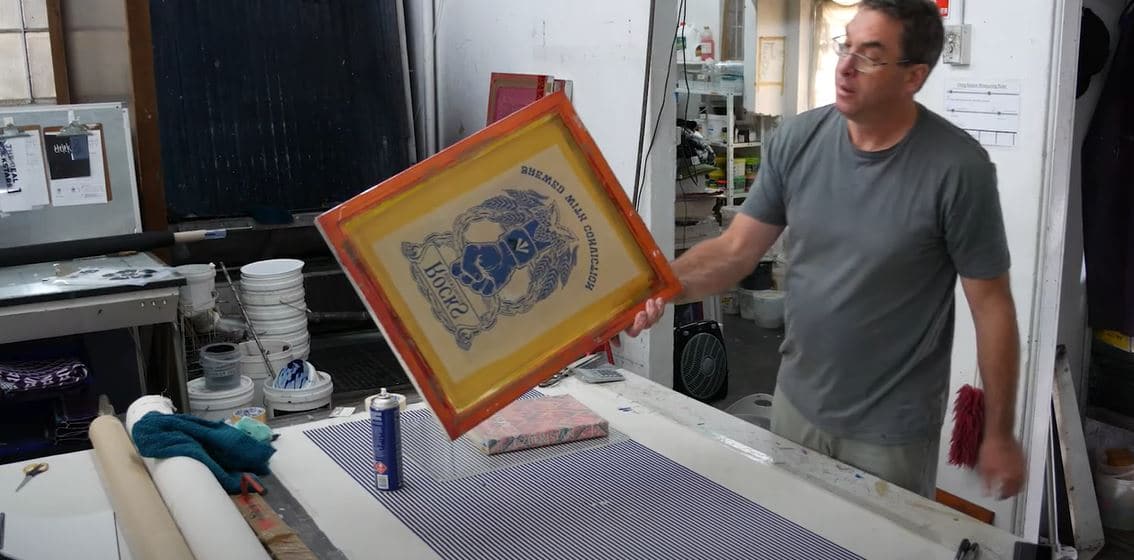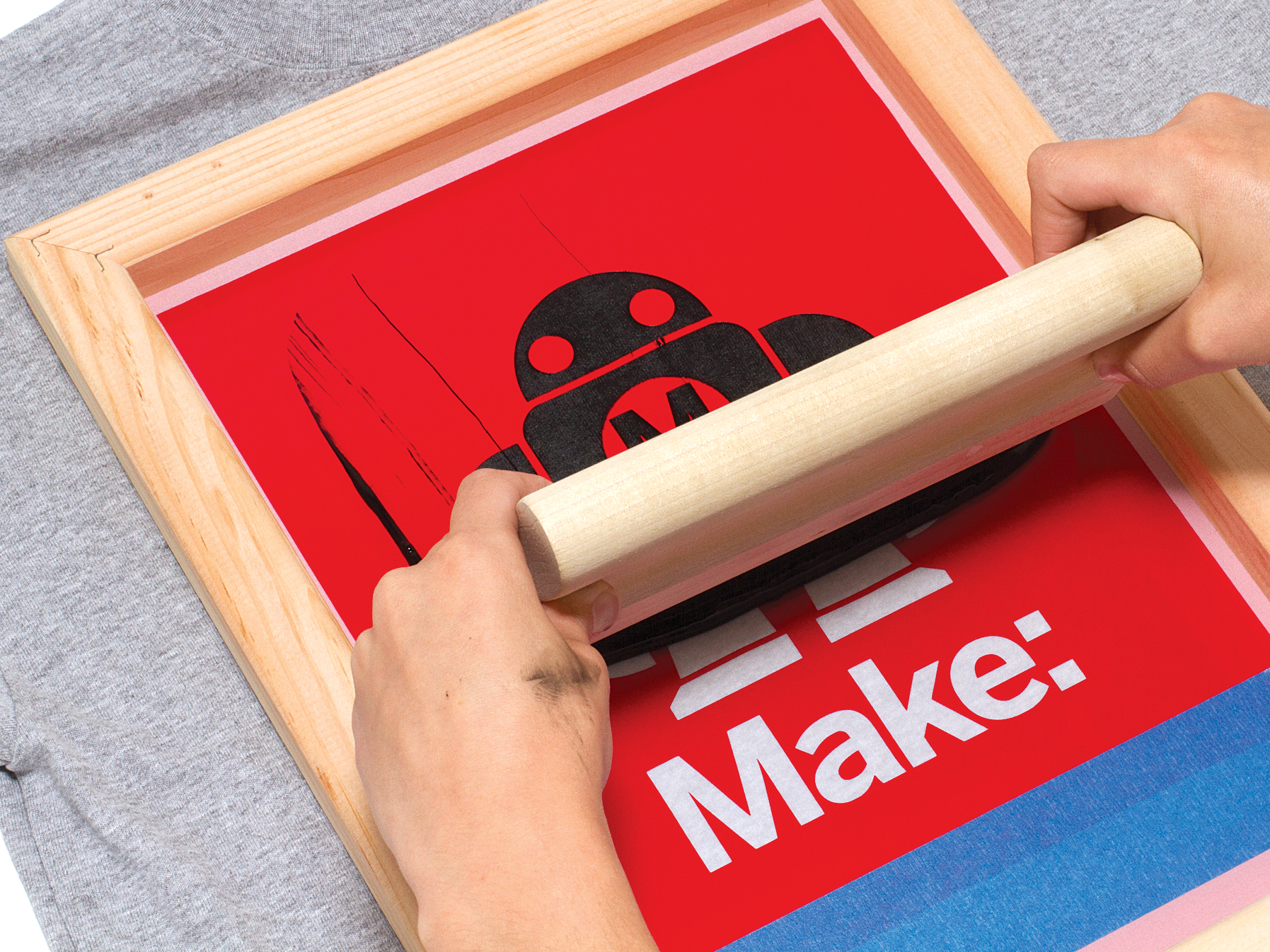ChatGPT said: How to customize your apparel with 10:9 Design Screen Printing in 3 easy steps
Discover the Various Kinds Of Screen Printing Techniques for Your Following Project
Screen printing uses a varied variety of methods that can improve any kind of creative job. From conventional methods like serigraphy to modern technologies such as direct-to-garment printing, each approach has its one-of-a-kind advantages. Specialized options, consisting of environment-friendly and metallic inks, introduce a lot more possibilities. Comprehending these methods can greatly affect the last end result. Nonetheless, the difficulty hinges on choosing one of the most ideal technique for particular requirements and wanted impacts. What variables should one think about?

The Fundamentals of Screen Printing
Although screen printing might seem complex, it is essentially a simple procedure that involves moving ink with a mesh screen onto various surface areas. The strategy starts with the production of a stencil, which defines the style to be published. This pattern is affixed to a mesh screen, commonly made of polyester or nylon. When the stencil remains in area, ink is put on the screen and pressed with the mesh using a squeegee, leading to the preferred pattern being published on the underlying product.
Screen printing can be done on a wide variety of substratums, consisting of material, plastic, and paper, making it a versatile selection for different tasks. The process permits lively colors and intricate layouts, making it prominent in sectors such as advertising, style, and art. Comprehending these fundamentals outfits individuals with the foundational understanding required to discover advanced methods in screen printing.
Conventional Screen Printing Techniques
Traditional screen printing methods have been employed for centuries, protecting the craftsmanship and virtuosity of this technique. This approach makes use of a mesh screen to transfer ink onto a substrate, such as material or paper, allowing for durable and lively layouts. The process begins with developing a pattern, which blocks certain areas of the screen to manage where the ink will be used.
One prominent technique is serigraphy, typically utilized for creative prints and restricted editions. One more is the usage of water-based inks, which are green and give a soft feel on textiles - 10:9 Design reviews. Additionally, traditional approaches can include hand-operated printing, where artisans use ink with a squeegee, ensuring accuracy and interest to detail
These methods stay valued in the market for their tactile top quality and the special appearances they create, interesting both consumers and makers that value the heritage of screen printing.
Digital Screen Printing Innovations
As the demand for faster production and customization in the printing industry has surged, electronic screen printing innovations have become a game-changer. This technology blends typical screen printing techniques with electronic processes, enabling rapid prototyping and detailed layouts that were previously hard to accomplish. One considerable innovation is the intro of direct-to-garment (DTG) printing, which helps with premium, full-color prints on various fabrics without the demand for displays. Furthermore, developments in ink solutions have actually brought about eco-friendly choices that preserve dynamic shades while lessening environmental influence. Using automated systems further improves manufacturing, lowering labor costs and enhancing accuracy. These technologies not only accommodate little set orders and tailored designs however additionally permit quicker turn-around times, making them suitable for businesses concentrated on meeting client demands in a hectic market. Digital screen printing, as a result, represents a crucial advancement in the domain name of printing strategies.
Specialty Screen Printing Approaches
Discovering specialized screen printing approaches discloses a varied range of techniques that press the boundaries of creative thinking and functionality in the printing industry. Amongst these, glow-in-the-dark inks offer an unique aesthetic effect, making designs come to life in low-light conditions. Metallic inks, known for their sparkling finish, add a touch of luxury to printed materials. An additional ingenious technique is discharge printing, which eliminates dye from the fabric instead of adding ink, leading to a soft, vintage feeling. you can try these out High-density printing develops a raised appearance on the surface area, improving tactile involvement. In addition, water-based inks are gaining appeal for their dynamic shades and reduced ecological impact. Each of these specialty techniques deals with certain design demands, enabling artists and brand names to create standout products that resonate with their target markets. By leveraging these methods, services can boost their screen printing jobs to new elevations, guaranteeing unforgettable perceptions.
Eco-Friendly Screen Printing Options
Environment-friendly screen printing options are gaining traction as the sector moves in the direction of sustainability. Sustainable ink options and using naturally degradable products are crucial elements in minimizing the ecological impact of the printing process. By taking on these practices, screen printers can add to a more sustainable future while preserving high-grade outcomes.
Lasting Ink Choices

Biodegradable Materials Usage
As the screen printing industry develops, the incorporation of naturally degradable materials is ending up being significantly important for eco aware practices. Producers and designers are currently checking out inks and substrates made from all-natural, renewable energies that break down much more effectively than traditional counterparts. These biodegradable choices decrease plastic waste and minimize ecological impact, aligning with the expanding demand for lasting items.
Common examples include water-based inks and organic cotton materials, both of which minimize harmful chemicals and promote eco-friendliness. Brand names that adopt these materials typically enhance their market allure, attracting customers that prioritize sustainability. As awareness of environmental problems remains to increase, the change towards eco-friendly materials in screen printing is most likely to gain energy, cultivating a greener industry standard.
Picking the Right Technique for Your Job
Exactly how can one determine one of the most suitable screen printing strategy for a specific project? The decision depends upon important site numerous aspects, consisting of the product to be printed on, the intricacy of the style, and the wanted production volume - 10:9 Design Screen Printing. Direct-to-garment printing is excellent for detailed layouts with various shades, while typical screen printing excels for bigger runs of easier graphics.
Additionally, factor to consider of the end-use of the printed product is vital. For outdoor applications, strategies that provide durability and weather resistance, such as plastisol ink, may be preferred. Alternatively, environmentally-conscious projects might gain from eco-friendly materials or water-based inks.
Eventually, comprehending the task's one-of-a-kind needs permits an educated option, making certain both aesthetic charm and useful longevity. By reviewing design intricacy, material compatibility, and manufacturing scale, one can properly choose one of the most ideal screen printing technique to meet their project's goals.
Frequently Asked Questions
What Is the History of Screen Printing?
Screen printing originated in ancient China around 1000 AD, developing via Japan and Europe. By the 20th century, it became preferred in industrial art and style, reinventing how designs were produced and distributed worldwide.

Exactly how Do I Prepare Art Work for Screen Printing?
To prepare art work for screen printing, one must assure high resolution, utilize a suitable shade mode, develop separate layers for each shade, and transform text to outlines, assuring compatibility with the printing process and wanted outcome.
What Products Are Finest for Screen Printing?
The most effective check my source products for screen printing include top quality inks, long lasting displays, and suitable substratums like cotton, polyester, or blends. In addition, making use of ideal emulsion and squeegees can improve the printing procedure and outcomes.
Can I Screen Publish in the house?
Yes, screen printing in the house is feasible. With the right products, configuration, and methods, people can produce premium prints. Careful factor to consider of office and equipment is necessary for successful outcomes.
What Prevail Blunders in Screen Printing?
Typical errors in screen printing include incorrect exposure times, insufficient ink consistency, misalignment of displays, not enough cleaning of products, and overlooking to check prints. These mistakes can endanger the quality and precision of the end product.
Screen printing might appear complicated, it is basically a simple process that entails moving ink through a mesh screen onto various surface areas. As the need for faster manufacturing and modification in the printing industry has actually surged, electronic screen printing innovations have actually emerged as a game-changer. Exploring specialty screen printing techniques discloses a varied array of techniques that push the limits of creative thinking and functionality in the printing industry. The ideal products for screen printing consist of top quality inks, durable displays, and ideal substratums like cotton, polyester, or blends (10:9 Design LLC Company). Common blunders in screen printing consist of improper direct exposure times, insufficient ink consistency, misalignment of screens, inadequate cleaning of materials, and neglecting to evaluate prints